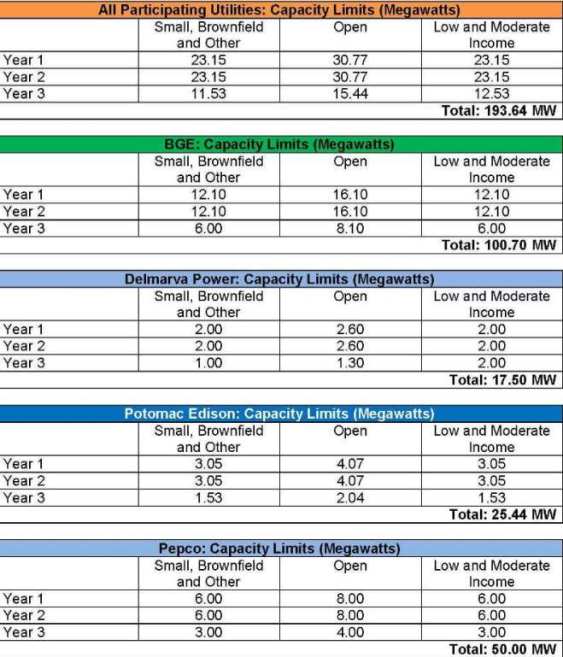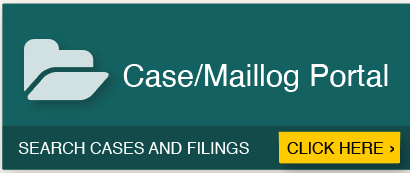Community Solar Pilot Program–Frequently Asked Questions
Frequently Asked Questions for Consumers/Subscribers
What is community solar?
Unlike solar panels which are installed on the customer’s rooftop and are solely for the use of one household or customer, community solar is shared by two or more utility customers in a utility’s service territory. In Maryland, the community solar pilot project will allow customers to buy a share of the electrical output of the community solar energy generating system. See also: How Community Solar works. (Source: U.S. Department of Energy)
How do I participate in a community solar pilot project?
You may subscribe to a community solar project (or even more than one) that is located in the same service territory as your electric utility–whether you get your electricity from the utility or a retail supplier. See your utility’s website for details, or visit EnergySage to see if there are projects near you.
What is a subscriber organization?
A subscriber organization is a person or entity that owns or operates a community solar energy generating system; or the collective group of subscribers of a community solar energy generating system. We expect solar developers, non-profit energy assistance groups, homeowners associations, community organizations, commercial businesses, utilities, retail electricity suppliers, etc., to consider applying to participate in the community solar program as subscriber organizations. Individual subscribers are customers who buy a share of the electricity generated by a community solar energy generating system and get a credit on the bill from their utility.
How can low or moderate income customers benefit from the community solar pilot program?
One category of the program is restricted for projects that must serve a significant percentage of low and moderate income customers. When you sign up for community solar, notify your subscriber organization that you are a low or moderate income customer and the subscriber organization will verify your eligibility.
I am a renter – can I still take part in a community solar program?
Yes. Participating in the program does not require you to install solar panels on your residence. You can subscribe to get your energy from a community solar project in your utility’s service territory.
What if already have rooftop solar – can I still participate?
Yes. You can apply to a subscriber organization as long as all of your subscriptions (community solar and rooftop) do not exceed 200% of your baseline annual energy usage. Subscribed energy in excess of annual use will be paid out to customers at a rate that may be less than the subscribed cost. Customers should choose subscription levels that correspond to annual use in order to avoid loss of subscription value.
How close to the solar panels do I need to live? What happens if I move?
You only need to live in the service territory served by a community solar project. If you move within that same territory you can transfer your subscription to your new residence. Subject to the terms and conditions of your contract, you may be able to transfer your subscription to another eligible customer.
How do bill credits work for the community solar program?
Bill credits will vary depending on your subscription contract (refer to your contract for specific terms and conditions). You will get a bill credit based on the amount of electricity produced by your share of the project. A utility may choose to apply the kilowatt-hour credit to each subscriber’s bill as either a reduction in kilowatt-hour use OR a dollar credit to the subscriber’s billed amount.
Does this program have consumer protection policies?
As with any business deal, READ YOUR CONTRACT CAREFULLY and make sure you understand and agree with the terms and conditions before you sign. There are a number of consumer protections:
- Subscriber organizations are not allowed to use marketing tactics that are unfair, false, misleading or deceptive.
- Agents may not market door-to-door unless they have had a criminal background check and have been properly trained in local, state and federal laws governing marketing activities.
- In addition, there are minimum requirements for a subscription contract as well as a contract disclosure form that must be presented to every subscriber before a contract is signed. The PSC does not regulate community solar rates.
The pilot program period is for seven years—what happens after that?
While no new projects will be accepted into the program after the end of the seven-year period, a subscriber organization can continue to operate a community solar project that was established during the program until September 30, 2044 or 25 years after the organization has been authorized to operate — whichever comes later.
Frequently Asked Questions for Developers/Subscriber Organizations
What are the program categories and capacity limits?
See the charts below for the program categories and capacity limits–both in total and by utility service territory.

Who can participate as a subscriber organization?
We expect solar developers, non-profit energy assistance groups, homeowners associations, community organizations, commercial businesses, utilities, retail electricity suppliers, etc., to consider applying to participate in the community solar program as subscriber organizations.
How do subscriber organizations apply to participate?
A subscriber organization (which can be a utility, retail electricity supplier, solar developer, etc.) must first be granted admission to the program by the Commission–the application form can be found here. After receiving an ID number, the subscriber organization must then apply to the electric company serving the location of the project. The capacity of each project must not exceed 2 MW.
Links to utility community solar programs and interconnection applications:
- BGE Community Solar Pilot Program
- Delmarva Power & Light Green Power Connection
- Potomac Edison Company (MD) Community Solar
- Potomac Electric Power Company (Pepco) Green Power Connection
Can existing solar generating systems be part of the pilot program?
A subscriber organization may apply to convert all or a portion of an existing solar generating system of 500 kw or less to the community solar program—if that system began operating before May 15, 2016. After the end of the first year of the community solar pilot program, if a service territory has less than 5 MW of program capacity, existing projects up to 2 MW may apply to the community solar program.
Are there restrictions on where community solar projects can be located?
Under this pilot program, multiple community solar projects owned by the same entity or affiliate cannot be located on the same or adjacent properties unless they are:
- On the rooftops of buildings
- In areas zoned for industrial use
- On a brownfield (but with a combined capacity not exceeding 6 MW)
- Over parking lots of roadways, or
- On a multi-level parking structure.
What are the consumer protection policies that subscriber organizations must follow?
Subscriber organizations are not allowed to use marketing tactics that are unfair, false, misleading or deceptive. Agents may not market door-to-door unless they have had a criminal background check and have been properly trained in local, state and federal laws governing marketing activities. In addition, there are minimum requirements for a subscription contract as well as a contract disclosure form that must be presented to every subscriber before a contract is signed. The PSC does not regulate community solar rates.
The pilot program period is for seven years—what happens after that?
While no new projects will be accepted into the program after the end of the seven-year period, a subscriber organization can continue to operate a community solar project that was established during the program until September 30, 2044 or 25 years after organization has been authorized to operate – whichever comes later.







 1-888-373-7888
1-888-373-7888 233733
233733
